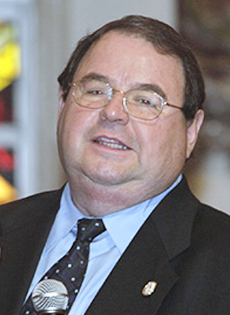
Liturgy: the art of celebrating the faith
Monday, July 29, 2019
Rogelio Zelada
At a meeting of ministries and parish life, a group of lay people complained to the pastor because the Sunday celebration of the Eucharist “was too long, insipid, dull and boring.” The priest, who was the one who always presided, became very upset and replied, “Well, prepare yourselves, because Heaven is a Mass that never ends!”
It was an explanation replete with ambiguity because, although Mass is not a show to entertain believers, the way of celebrating the sacred mysteries of Christ should make use of the language that makes the Church vibrate, and also makes the vital experience of the community vibrate. It’s a language articulated in the deepest Christian conviction, which draws its signs from history and theology, to celebrate and live the faith received from Christ himself, from the founding tradition of the apostles and the enrichment that centuries of reflection have contributed to liturgical forms.
Everything that is the object of faith has its place in the prayer of the Church. We celebrate what we believe, and every celebration is a reaffirmation of our understanding of the truths to which we are called to adhere from within. The liturgy not only celebrates faith within a Church model but also manifests it. It not only celebrates the events (the memory of the past), but also all affirmations that arise from the important experiences that have been and are being lived. The law and the forms of prayer, celebration and worship are not only the laws of faith but also the laws of being and doing of the believing community. There is a direct relationship between the way of understanding the present in which one lives and, from that shared experience, assuming a particular image of God, of Christ, of the Church, and of liturgy and pastoral action, as well.
Since the great renewal of the Second Vatican Council, the ancient language of the liturgy has acquired more current expressions. St. John XXIII warned the Council Fathers that the best way to preserve the treasure of tradition and faith was not by “keeping it in a museum,” but by recovering its vitality and the necessary understanding of the signs and rites by the people of God, who are the authentic and true celebrants of the liturgy.
In the first centuries of the Church, baptism was accessed through a genuine conversion consolidated by the process of the catechumenate, which took as long as necessary. Once the candidate was fully initiated through the sacraments of baptism, confirmation, and Eucharist after Lent and on the night of the Easter Vigil, the bishop summoned them during the seven weeks of Easter to initiate them in the understanding of the contents and the sacred language of the liturgy.
These catecheses, called “Mystagogical,” completed the instruction received during the catechumenate and allowed the neophytes to understand the meaning of the rites, signs, and symbols found in community celebrations. The mystagogical catechesis was essential for the believer to achieve an understanding of the liturgical language and to fully understand and enjoy the sacred mysteries of Christ.
These catecheses were abandoned over the centuries and the evolution of the Church. The celebration of the believing assembly became a mysterious rite that had to be attended in silence, without outside participation. It was separated by the barrier of Latin and exempt of visibility, with the altar drowned out by huge altarpieces where the all-important liturgy of the Eucharist appeared as an exclusive affair of the priest or the bishop. It forced us to “hear Mass on Sundays and feast days” with a passive attitude and at least, albeit belatedly, following what happened before us with the help of a bilingual missal.
The liturgical renewal made us leap from the extreme passivity to which we were reduced in the pre-conciliar liturgy, to the extreme exteriorization of full, active and conscious participation in all the rites of Catholic worship, but with the deficiency of the absence of a symbolic catechesis that would help in understanding the rich celebratory tradition of the Church. We have the challenge of understanding the meaning of the rites; the pace of the liturgical year; the value of the festivities; the appropriation of gestures made and words pronounced; of assimilating the texts that are proclaimed, recited and sung; and ultimately letting ourselves be saturated by the images observed and the scents smelled. We are invited to celebrate it well to give the best image of a Church that, nourished by the Spirit, expresses its truth in the quality of the signs.
St. John Paul II reminded us that the liturgical assembly is the sign “that gives hospitality to Christ and to the people he loves.” We must take care of the quality of the liturgy, of the signs, of the people and the place of the celebration of the faith, so that they speak for themselves, catechize, manifest, and lead to Christ. In this way, the assembly of the faithful transforms into the great sign of the Word of God, listened and received, expressed in prayer, song, music, people, colors, vestments, and silence. It is about manifesting the connection between the human and the divine, to make clear the presence of Christ in the beautiful center of the liturgy.
As Pope Paul VI requested at the beginning of the implementation of the liturgical reform: “…dedicate the utmost care ... to knowledge, explanation, application of ... the norms with which the Church desires ... to celebrate the divine worship.” He also recognized in his speech that this “is no easy task; it is a difficult task, it requires direct and methodical attention; it requires your personal, patient, loving and truly pastoral assistance.”
And so, that is where we are...


Comments from readers